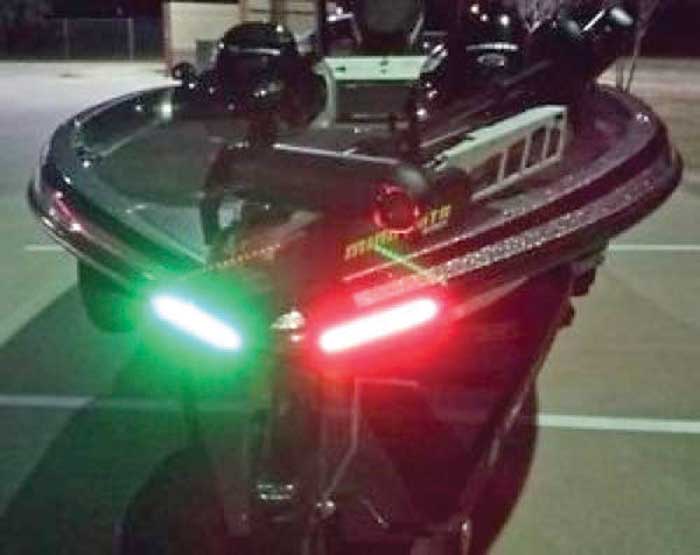One night last fall on a boat delivery south to Norfolk from Rhode Island, the mate noticed that there didn’t seem to be any red and green reflections from the running lights up on the bow, just after our cruising sailboat had motored through Hell Gate.

“Just what we need, going into New York,” I muttered, cursing our luck. But it got better. We lost the radio, too.
New York harbor at night is as busy as the daytime but more dangerous because you can’t see anything that isn’t lighted, and there are plenty of very large high-tonnage commercial craft transiting the harbor. Some of them, like a totally unlighted barge in tow, aren’t following the rules.
We needed to do something about this very quickly as we were about to enter a high traffic area with crisscrossing tugs, ferries, barges, tows, workboats, police craft, and all manner of commercial traffic, all of them a lot bigger than us.
We turned on our spreader lights; we were motoring. We tried to troubleshoot the nav lights. The house VHF, down at the nav station, was connected to a RAM microphone in the cockpit at the helm. The Mate made a “Securite” call, but no one could hear us. Then he broadcast a radio check, but it too wasn’t heard; we could tell because the house VHF in the nav station didn’t echo the broadcast. The old RAM mic had stopped working. So, here we were plunging headlong down the East River in the middle of the night with no running lights and no radio in the cockpit.
Thankfully we had a hand-held VHF that worked and would be fine for close range, or we could relay information to the owner at the nav station below, since that mic worked and we could transmit from there. But the owner, a sharp and resourceful fellow originally from the Ukraine, had an idea. As we motored in calm waters, he climbed out on the foredeck, hung over the bow, and with the help of a screwdriver removed the dual red and green lens fixture. The lights had worked earlier; clearly there was an electrical problem somewhere. He had a small bright LED flashlight aboard that he taped inside the red and green lens housing and taped that, in turn, to the bow pulpit. The stern light was working fine. This jury rig helped us get safely through NYC harbor and out into the bay by sunrise.
After that incident, I realized that it makes good sense for any boat owner who plans to transit busy waterways at night with any frequency to have onboard a battery-powered portable set of nav lights or fixture. There are plenty of them out there from various manufacturers, and the cost is in the range of $30 or less. High-brightness, low-power-usage LED lights have made this possible, with some of these products such as Attwood’s 14191-7 Clamp-On Portable Marine Boat Navigation Light Kit offering 150 hours of run time on three (3) AAA batteries. Vorocon sells a red and green set for about $16.
Many of these products were designed with kayaks in mind, but you can use them with your dinghy if you are running around crowded harbors in the Caribbean at night. After my experience, I feel that it’s great extra insurance to have aboard.
About the Author: Capt. Mike Martel holds a 100-ton Master's license and is a lifelong boating and marine industry enthusiast. He enjoys delivering boats to destinations along the East Coast and to the Caribbean and writing about his experiences.